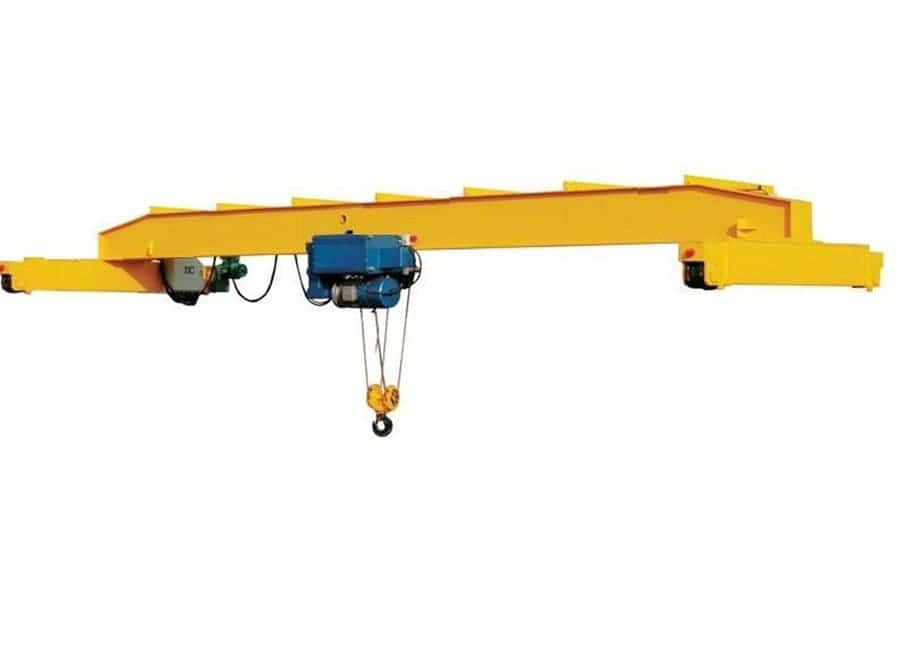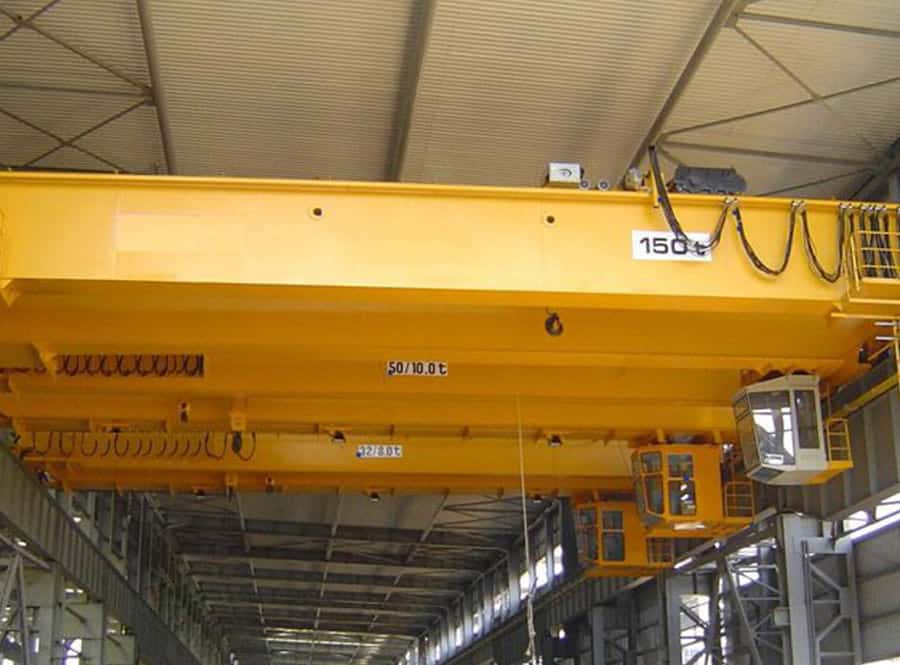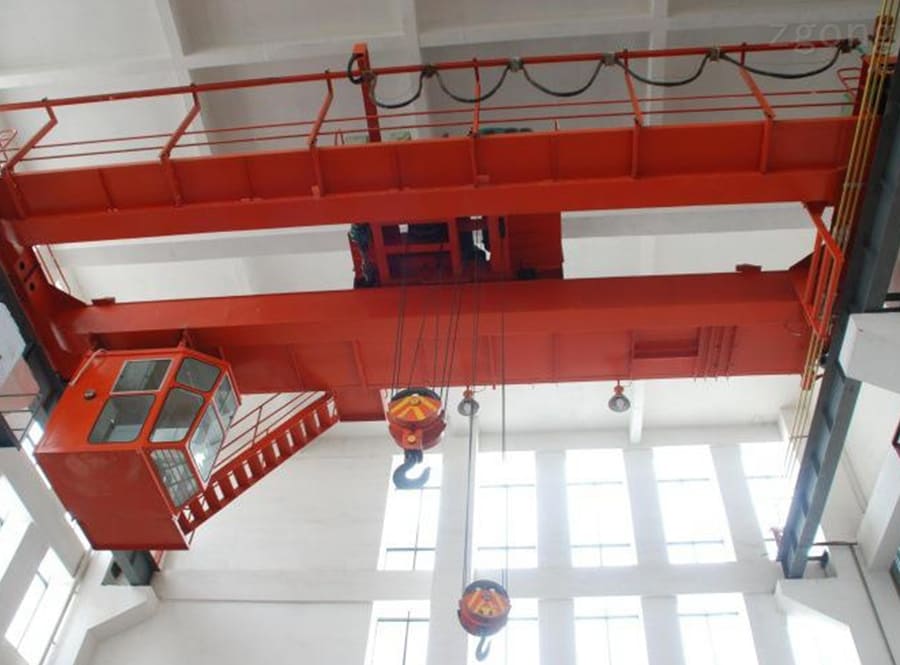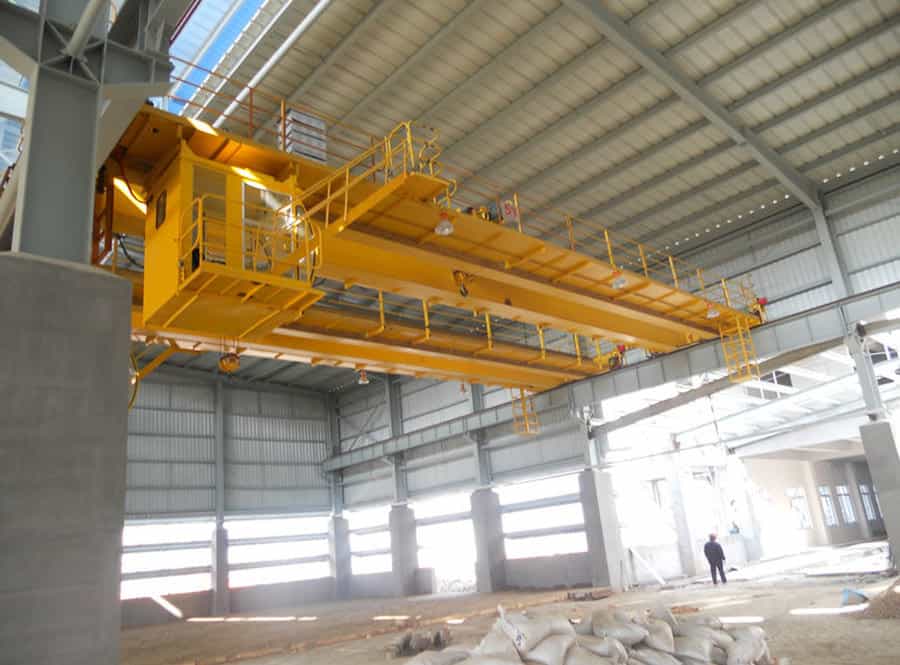Brug hyskraan is a major lifting and transportation equipment in the production logistics process, and its utilization efficiency is related to the production rhythm of the enterprise. At the same time, bridge cranes are also dangerous special equipment and may cause harm to people and property in the event of an accident.
The driver of the overhead crane is the most active and critical factor in the use of the oorhoofse hyskraan. The driver’s ability to operate the overhead crane is very important and is a major issue directly related to the company’s efficiency and safe production. The author summarizes his own practical experience in operating bridge cranes and puts forward the following operating experience based on the characteristics of bridge cranes.

1. Bemeester die eienskappe van toerusting en werksvoorwerpe
To correctly operate a bridge crane, you must carefully master key elements such as the equipment principle, equipment structure, equipment performance, equipment parameters, and operating process of the equipment you are operating. These key factors are closely related to the use and operation of this equipment.
1. Bemeester die beginsel van toerusting
'n Noukeurige begrip van die beginsels is die voorvereiste en grondslag vir goeie werking van toerusting. Slegs wanneer die beginsels duidelik en diep bemeester word, die teoretiese grondslag gevestig is, die begrip duidelik en diepgaande kan wees, en die operasievlak 'n sekere hoogte kan bereik.
2. Bemeester die toerustingstruktuur noukeurig
Om die toerustingstruktuur noukeurig te bemeester beteken dat jy die belangrikste strukturele komponente van die brugkraan moet verstaan en bemeester. Brughyskrane is spesiale toerusting en hul strukture het hul eie besonderhede, wat noukeurig verstaan en bemeester moet word. Om die toerustingstruktuur noukeurig te bemeester is die sleutel om vertroud te wees met die toerusting en om die toerusting vaardig te beheer.
3. Bemeester toerustingprestasie noukeurig
Om die werkverrigting van die toerusting noukeurig te begryp, is om die tegniese werkverrigting van elke meganisme van die brugkraan te bemeester, soos die krag en meganiese werkverrigting van die motor, die kenmerkende remtoestand van die rem, en die veiligheid en tegniese werkverrigting van die veiligheid beskermingstoestel, ens. Slegs deur die prestasie te bemeester, kan ons die situasie beter benut, die toerusting wetenskaplik beheer, die agteruitgangsproses vertraag en die voorkoms van mislukkings voorkom en verminder.
4. Bemeester toerustingparameters noukeurig
Om die toerustingparameters noukeurig te bemeester beteken dat jy die belangrikste tegniese parameters van die brughyskraan moet verstaan en bemeester, insluitend werktipe, werkvlak, gegradeerde hysvermoë, meganisme werkspoed, span, hefhoogte, ens. Die tegniese parameters van elke stuk toerusting is dikwels anders. Afhangende van die tegniese parameters van die toerusting, is daar verskille in sy werkverrigting. Noukeurige kennis van die presiese parameterwaardes vir elke oorhoofse hyskraan is van kritieke belang om die toerusting akkuraat te bedryf.

5. Bemeester die werkproses noukeurig
Carefully mastering the operation process means mastering the steps and processes of the production operations served by the bridge crane, and striving for the best design and reasonable operation of the lifting and transportation procedures used in various processes. Only by proficiently mastering the process flow can we master the operation rules, be confident and operate freely, so as to improve work efficiency, safety and reliability.
2. Begryp die statusveranderinge van die toerusting
Die brug hyskraan is special equipment, and the operation and operation must ensure the technical status and intact condition of the bridge crane. During the operation of bridge cranes, they are affected by factors such as production conditions and environment. The functions and technical status determined during the original design and manufacturing may continue to change and be reduced or deteriorated. Therefore, the driver must carefully grasp the status changes of the equipment, conduct good operation control of the bridge crane, and perform maintenance and inspections carefully to prevent and reduce failures.
1. Begryp die statusveranderinge van die toerusting versigtig
Die toerusting moet noukeurig onderhou word. Maak gereeld alle dele van die brugkraan skoon, maak skoon, smeer, verstel en draai volgens die vereistes van die instandhoudingstelsel vas. Hanteer verskeie probleme wat enige tyd voorkom betyds, verbeter die bedryfstoestande van die toerusting, knyp probleme in die kiem en vermy onnodige verliese. Die praktyk het bewys dat die lewensduur van toerusting in 'n groot mate afhang van die mate van instandhouding.
2. Begryp die statusveranderinge van die toerusting versigtig
Begryp die statusveranderinge van die toerusting versigtig en kan die toerusting nagaan. Verstaan en bemeester die dele van die brugkraan wat gereeld geïnspekteer moet word, en bemeester die metodes en maniere om die dele te inspekteer.
3. Skills in monitoring equipment through senses
Skills in monitoring equipment through the senses, i.e. seeing, hearing, smelling, touching and feeling. “Visual” means to use vision to observe the surface of the equipment in order to detect intuitive defects and failures. “Listening” means relying on hearing to detect the status of the device. The driver operates in the cab and cannot see the operating conditions of the equipment on the bridge. Hearing becomes an important auxiliary safety means. When electrical appliances or mechanical equipment are operating normally, they generally only emit very light harmonic sounds, but when they are malfunctioning, they will make abnormal noises. Experienced drivers can determine the approximate location of the fault based on the different changes in the sound. Therefore, identifying diseases by sound should be one of the internal skills of a driver. “Smell” means relying on the sense of smell to detect the status of the device. The electrical coil of the bridge crane catches fire, and the brake pads smoke and emit a pungent odor that can be smelled from a distance. If you find any peculiar smell, you should stop the vehicle immediately for inspection to avoid causing fire or other major equipment accidents. “Touch” is to diagnose the abnormal status of the equipment through hand feeling. Drivers sometimes encounter abnormal conditions in equipment and are able to diagnose and determine the cause of the malfunction. “Jue” here refers to feeling or feeling. Drivers will feel information from all aspects when operating, and experience will tell you what is normal and what is abnormal. When drivers find that they feel different from usual at work, they should immediately trace the source to avoid future troubles.
3. Communicate carefully with ground support personnel
The use of operating brug hyskrane to complete lifting tasks requires the cooperation of many people such as drivers, commanders, and rigging personnel. Sometimes its operating scope also includes other equipment and operators, so as a driver, you must carefully work with the ground. Communicate and cooperate well with the personnel. The work objects, equipment status, work instructions, and operating environment must be confirmed before proceeding.
The driver must confirm the command language with the ground personnel before operating. If the command language is not agreed upon, the operation cannot be carried out. The driver must concentrate when operating and operate according to the commander’s signals. Before each operation, the driver should ring the bell to remind the personnel at the operation site to pay attention. At the same time, pay attention to the situation around the lifting objects. No one is allowed to stay under the hoisted object, under the arm, or in the area where the hoisting weight rotates. When the line of sight between the driver and the hoisted object may be blocked during hoisting, the driver should carefully inspect the on-site environment within the hoisting range and confirm the hoisting path of the hoisted object before hoisting. During the hoisting process, the signal contact with the commander should be strengthened. At the same time, the commander should stand within the driver’s line of sight to give commands to avoid hoisting safety accidents due to blocked sight. If there are only drivers and hookers working on site, the driver must work closely with the hookers and work in unison. When moving and lifting heavy objects, you should only follow the signal given by the hooker. However, no matter who sends the “stop” signal, you should stop immediately.
4. Correctly determine the nature of the emergency and take appropriate emergency response measures.
Bridge cranes are dangerous equipment and may cause property damage and casualties once they are out of control. As a driver of an overhead crane, you should correctly judge the nature of the emergency and take appropriate emergency response measures. It is a must-have skill to avert danger or minimize accident losses in dangerous situations.
The emergency state of the brug hyskraan can also be called the state of the bridge crane approaching danger. It is characterized by the sudden appearance of equipment (device) in a dangerous, failed, and out-of-control state. Improper handling will cause the consequences of an accident. There are many types of emergency situations for bridge cranes. The most likely ones include failure of the lifting brake mechanism, sudden power loss of the crane, loss of control of the trolley control mechanism, broken wire rope, crane fire, lifting limit failure of the lifting mechanism, etc. situation. We should be fully prepared in terms of ideological understanding and establish emergency plans for various possible dangers.
In addition, you should also have a clear understanding of the production operation procedures, so that you can better cooperate with the work and avoid accidents. For example, if the hoisting brake fails when there is a heavy object on the crane hook and the heavy object slides down, the driver should continuously ring the bell or whistle to signal all personnel on site to avoid it.





















